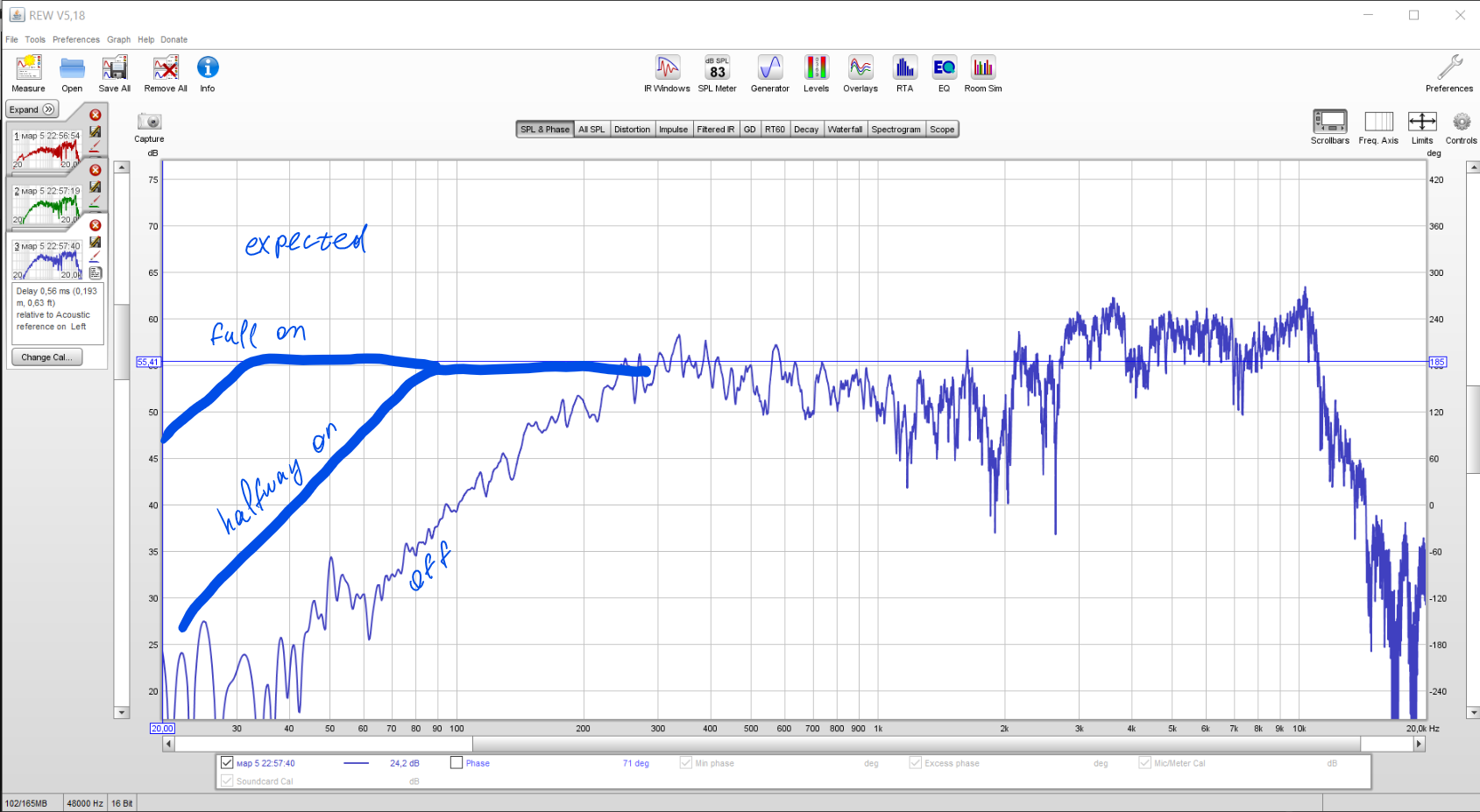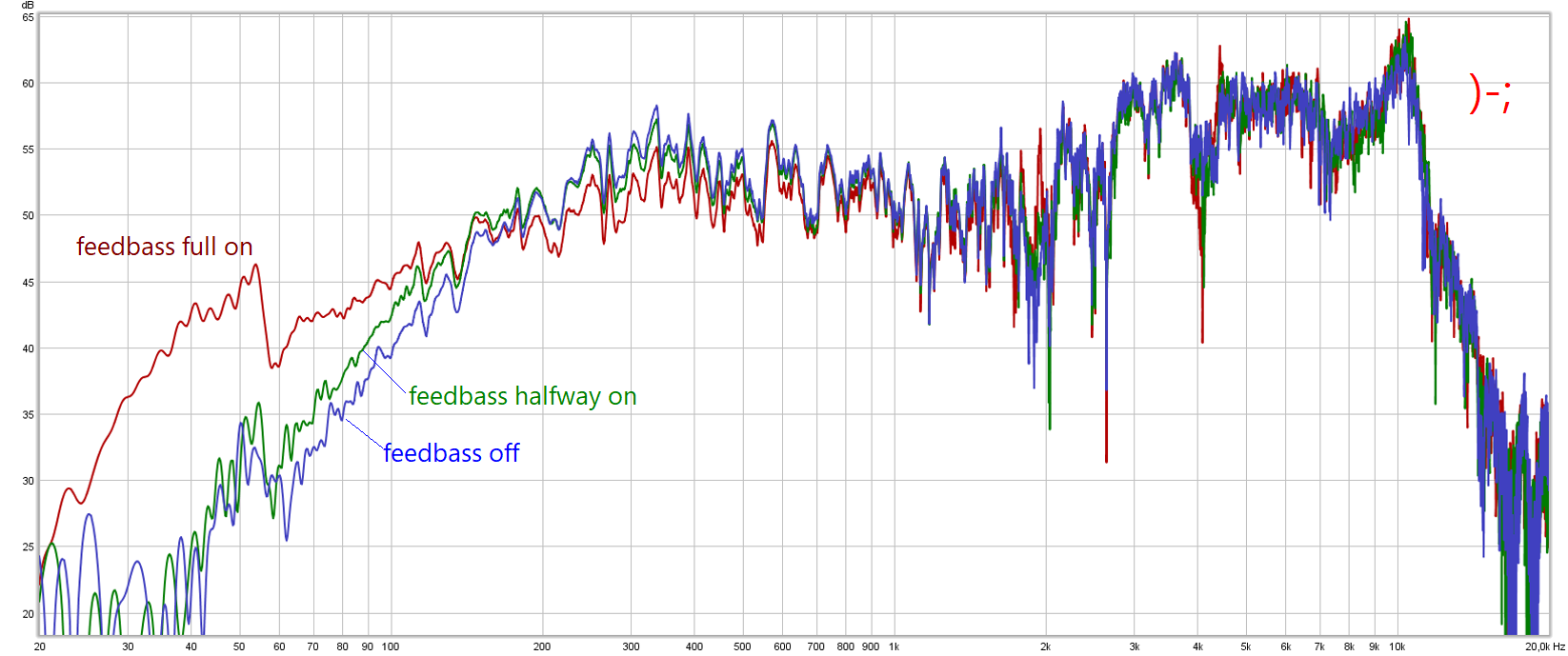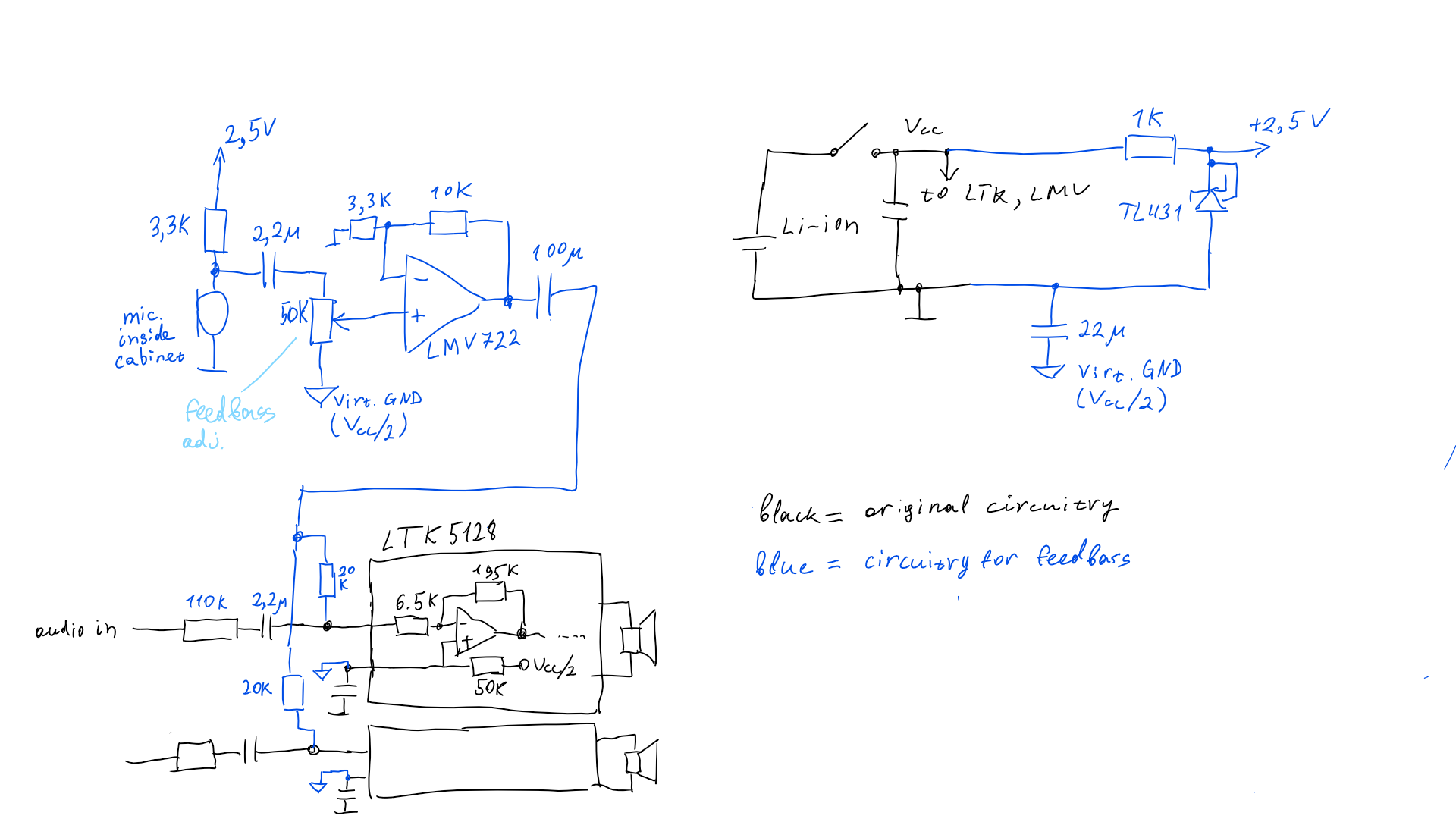So, I hoped to get something like this...
 And of course... it's not really what happens. This is what I measure:
And of course... it's not really what happens. This is what I measure:
("full on" means feedbass pot is at the point just below where self-oscillation begins)

Now, why doesn't it do what I expected it to? well, there is a big thing, that I hoped would be small. When compensating for a spring, I need to put out Force. Force is proportional to current through voice coil. But the amplifier outputs voltage, and voltage is related to current as follows (ignoring coil's inductance):
I = (U - U_backEMF) / R
My original hope was that the drivers are crappy, and their back-emf is negligible, so output voltage and coil current are in direct relationship. However, as it is hinted by quite a few observations, U_backEMF, which is voltage generated by the coil due to its movement in magnetic field, is not negligible at all. One of the things that suggests it is the lack of resonance peak in frequency response. The resonance is dampened because the coil is essentially shorted by amplifier, and it brakes like a shorted DC motor. That resonance appears if I connect the speakers through 40 Ohm resistors.
 DeepSOIC
DeepSOIC
Discussions
Become a Hackaday.io Member
Create an account to leave a comment. Already have an account? Log In.